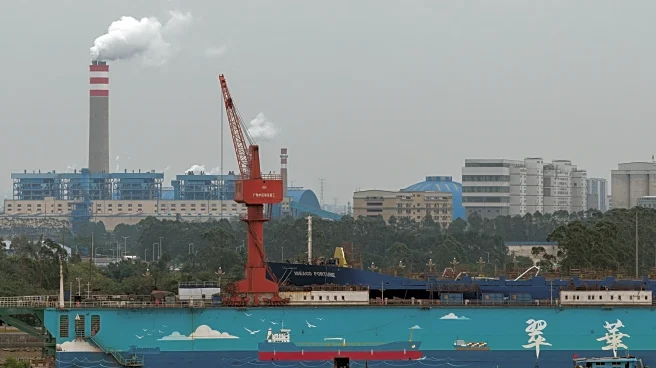What's Happening?
China is advancing its flying taxi industry, with companies like EHang and XPENG leading the charge in developing electric vertical take-off and landing (eVTOL) vehicles. These innovations are part of China's
broader 'low-altitude economy,' which aims to utilize airspace below 1,000 meters for economic activities. Despite the potential, the industry faces significant hurdles, including strict airspace controls and battery limitations. Recent incidents, such as the collision of XPENG's eVTOL aircraft, highlight the challenges in ensuring safety and reliability. The Chinese government is working to simplify airspace approval procedures and promote civilian activities through proposed revisions to civil aviation laws.
Why It's Important?
The development of flying taxis represents a significant shift in urban transportation, potentially reducing congestion and offering new economic opportunities. For the U.S., this could mean increased competition in the aerospace sector, as China positions itself as a leader in drone technology and low-altitude airspace investments. The advancements in eVTOL technology could influence global standards and regulations, impacting U.S. companies involved in similar innovations. Additionally, the focus on low-altitude economy could lead to new export opportunities for China, affecting international trade dynamics.
What's Next?
China's Civil Aviation Administration has granted certificates for commercial passenger services with pilotless eVTOLs, indicating a move towards operational routes. Companies like EHang are planning to launch aerial sightseeing services, with infrastructure being developed in multiple cities. The industry is expected to grow significantly by 2035, with projections of reaching a turnover of 3.5 trillion yuan. However, the pace of commercialization will depend on overcoming technical challenges and gaining public acceptance. The Chinese government’s ability to mobilize resources could accelerate progress, but safety concerns remain a critical factor.
Beyond the Headlines
The expansion of the flying taxi industry in China could have broader implications for urban planning and environmental policies. As cities adapt to accommodate new transportation technologies, there may be shifts in infrastructure development, such as the creation of dedicated takeoff and landing sites. The environmental impact of increased air traffic and energy consumption from eVTOLs will need to be addressed, potentially influencing global discussions on sustainable urban mobility. Furthermore, the integration of drones and flying taxis into daily life could alter cultural perceptions of transportation and technology.













